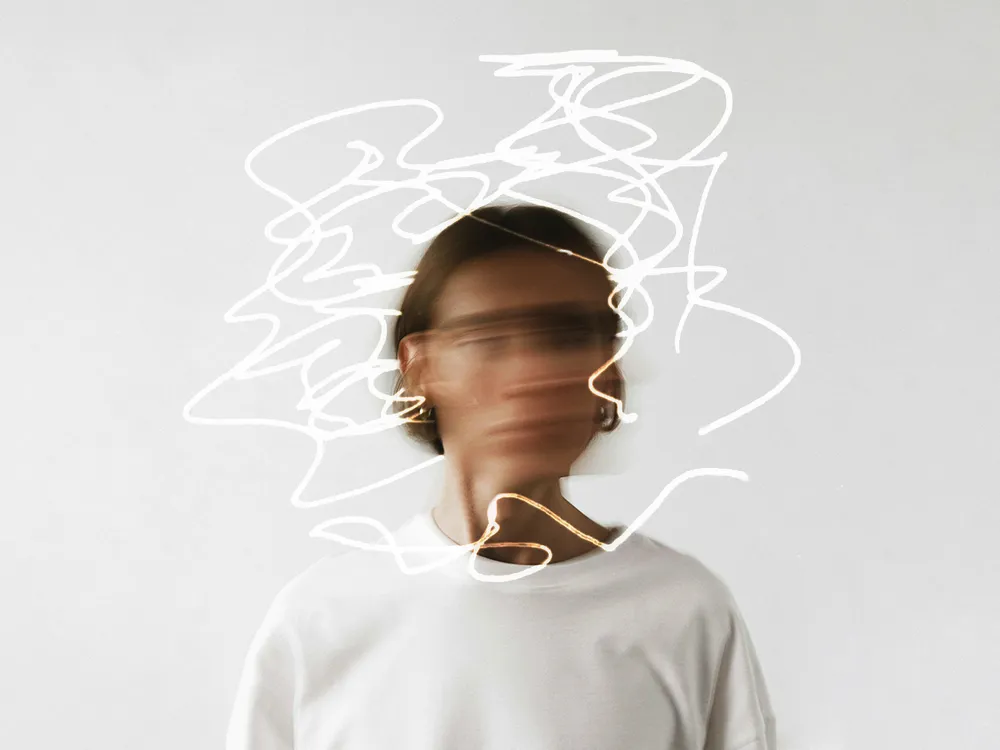Why Are So Many More Women Being Diagnosed With ADHD?
Experts once thought ADHD was something only boys experienced. The research is finally starting to catch up with reality

Key takeaways: What you should know about women and ADHD
- ADHD often presents differently in girls and women than boys and men. More common symptoms among females include struggles with time management, being hyperverbal and daydreaming whereas boys are more likely to display hyperactive symptoms.
- Diagnoses for female patients are often delayed and occur later than identification of the condition in their male counterparts.
Adina Levin had heard the same critique often: She needed to learn to control her emotions. She would cry in response to negative feedback, interrupt others by blurting things out and pen long emails to colleagues about aspects of the workplace she thought needed fixing.
Only in her early 30s, when a therapist mentioned attention deficit hyperactivity disorder (ADHD), did Levin realize she might be dealing with something well beyond personality quirks or challenges. Now 35, Levin, who lives in Barcelona and works as a freelance copywriter and voiceover artist, has an official diagnosis.
“I used to think that ADHD was reserved for kids like Ben, one of my first and second grade classmates who always seemed to be getting in trouble because he was so rambunctious,” she says. “But the more I learn about the condition and my own mind, the more I can see how a body that can’t sit still and thoughts that can’t sit still either have an awful lot in common.”
For decades, doctors viewed ADHD as a condition that only affected male children—the stereotypical hyperactive boy. That understanding has slowly evolved: Researchers now know that ADHD continues into adulthood and crosses genders, though the symptoms can appear vastly different. ADHD often presents more subtly in girls than boys. Girls may, for example, struggle with time management, daydreaming or being a chatterbox and are more likely to be diagnosed with the primarily inattentive type of ADHD over the hyperactive type. (A combination diagnosis can also be applied.)
“Inattentive symptoms are not what teachers are calling home about and getting kids kicked out of class,” says Julia Schechter, a clinical psychologist and co-director of the Duke Center for Girls & Women With ADHD, which focuses on education, outreach and research. “It’s contributed to difficulties and delays in understanding that girls and women can have this condition.”
According to the Centers for Disease Control and Prevention, half of the more than 15 million U.S. adults living with an ADHD diagnosis received that diagnosis in adulthood. Women are starting to make up a larger portion of that group: Data collected by Epic Research found that “the incidence of ADHD diagnosis in the 23-29-year-old and 30-49-year-old female populations nearly doubled from 2020 to 2022.”
These findings don’t indicate a sudden onset of ADHD. Rather, research and clinicians “are finally catching up with the reality,” says Stephen Hinshaw, a clinical and developmental psychologist at the University of California, Berkeley. “Sometimes for boys, but much more often for girls and then for women, the subtle signs have been there if you go back historically, and you look through the comments and you look through report cards,” he says. “But nobody thought it could be ADHD because we didn’t think ADHD existed in girls really until the last couple of decades.”
Girls’ symptoms were, and still are, often attributed to other issues, like anxiety or depression. While these comorbidities are common with ADHD, the underdiagnosing of women persists—and can have severe repercussions.
Women are diagnosed later
Erin Pier spent 14 years working as a school psychologist in metro Denver. Part of her job involved identifying learning needs and ADHD in students.
“I had a license to assess other people and look for symptoms,” she says, “but I never saw them in myself.”
During a conversation with her 10-year-old son, who struggles to sit still and follow multi-step directions, Pier began to notice similarities with her own behavior. “I can hear my mother’s voice when I say things to my son: You forgot your shoes again? Did you even look at the time?” This past December, at age 40, Pier was diagnosed with predominantly inattentive ADHD (ADHD-PI).
Ari Tuckman, a psychologist and conference committee co-chair for Children and Adults with Attention-Deficit/Hyperactivity Disorder (CHADD), a national advocacy group, calls such an occurrence the “two-for-one diagnosis”—a parent recognizing their own symptoms while their child is in the process of being diagnosed.
In recent years, partly due to social media, where content tagged #ADHD has hundreds of millions of views, more women are being diagnosed in their own right, though experts caution against using social media or any sort of quick questionnaire to diagnose oneself.
Around three decades ago, books like Women With Attention Deficit Disorder by Sari Solden and Understanding Girls With ADHD by Kathleen Nadeau, Ellen Littman and Patricia Quinn were published. But it wasn’t until more recently that researchers and professionals came to broadly support the idea that ADHD is just as common among women as it is among men. In fact, though boys are twice as likely to have diagnosable ADHD symptoms than girls, that diagnosability evens out by adulthood. Researchers now estimate that about 6 percent of women have ADHD.
But women are still delayed in their diagnoses. Recent research published in the Journal of Attention Disorders showed that the average age of ADHD diagnosis for male patients was 11 to 23 years, but 16 to 29 years for female ones.
Women more so than men, experts say, find ways to cope or compensate for their symptoms. And they often internalize those symptoms as personal failures.
Kate Tracy knows that firsthand. The North Carolina-based journalist was diagnosed with ADHD earlier this year at age 33. For most of her life, Tracy struggled with being late, procrastination and being hypersensitive to criticism. “The thing that prompted me to look into an actual diagnosis is just that these are problems I haven’t been able to solve myself,” she explains. “It’s brought a lot of shame and guilt when you watch your other friends, and they seem like they can just handle life so much easier than you can.”
Women in these more mature age groups are also more likely to be in the midst of major life transitions, such as starting new jobs, getting married or becoming empty-nesters. Such periods can “change the way your life operates,” says Duane Gordon, president of the Attention Deficit Disorder Association (ADDA), an international nonprofit that provides resources and community to adults with ADHD.
During these times, a person’s coping mechanisms may stop working.
That’s what happened in Pier’s case. When she shifted from her school psychologist job to co-founding the Transformative Justice Project of Colorado, which focuses on juvenile justice reform, she left a role with prescribed duties to one where she had to help build the structure. Discussions about creating systems sounded, she says, like a foreign language.
Her ADHD diagnosis helped Pier understand how her brain works and how that affects her work and her parenting. “It’s kind of like a bomb went off for me in making sense of so much of my life and who I am,” she says.
The consequences of misdiagnosis
University of California, Berkeley’s Hinshaw has spent more than two decades running the largest longitudinal study of ADHD in girls in existence, known as the BGALS study. It started in the late 1990s with 228 girls between the ages of 6 and 12, 140 of whom were diagnosed with ADHD. More than 90 percent of the group has continued to participate in 5-, 10-, 16- and 25-year follow-ups, and the study is ongoing.
Hinshaw and others’ research shows that women with ADHD are significantly more likely to self-harm and attempt suicide than women without ADHD; experience unplanned pregnancies and intimate partner violence; and suffer from major depression. Sleep disorders and fibromyalgia diagnoses also appear to be elevated among women with ADHD, as does low self-esteem more generally.
A study published in the British Journal of Psychiatry in January found that women with ADHD have a life expectancy that’s about 9 years shorter than women without ADHD. (Men with ADHD live around 7 years less.)
ADHD is a lifelong condition—though symptoms can wane, researchers now know that it persists into adulthood for well over half of all children who are diagnosed—but treatments are available. Cognitive behavioral therapy and healthy habits, including sleep and exercise, can help. So can the right dosages of medications such as Ritalin and Adderall. Despite Health and Human Services Secretary Robert F. Kennedy Jr.’s skepticism about these types of medications, they have been shown to be safe when used properly under professional supervision.
Such treatments can benefit women—when they are able to access them. “Even after being diagnosed with ADHD, the girl is still significantly less likely to be prescribed ADHD medication compared to the boy,” Duke’s Schechter says. “I think it ties back to misunderstanding of what ADHD looks like in girls. Providers are just not fully capturing that this is the same thing they see in their boy patients.”
Guidelines on the diagnosis and treatment of ADHD in adults do not yet exist in the United States. CHADD and the American Professional Society of ADHD and Related Disorders are in the midst of finalizing adult diagnostic guidelines, which are set to be publicized this year.
But more research with women at the center is needed. For example, scholars are only starting to understand the role hormones play in ADHD presentation, with symptoms seemingly growing more severe at certain points in the menstrual cycle or during perimenopause.
“It is quite common for us to hear stories about women being diagnosed with ADHD but only after years of being misdiagnosed with anxiety or depression or just being a woman,” ADDA’s Gordon says. “For years, we missed women completely.”
All of that adds up to women being left to figure things out on their own and suffer from symptoms they don’t realize are connected to a chronic, treatable condition.
“I’ve always been a high achiever, but it’s always come at such a high cost to my overall well-being—higher than my peers, it always seemed,” says Levin, the Barcelona-based freelancer. Years of therapy and her official ADHD diagnosis have helped her lower that cost. So has a carefully constructed system of analog and digital planners, calendars, alarms and timers, as well as meditating each day—or as often as she can now that she’s a new mom.
Levin now understands her ADHD as a “lack of order” in her thoughts and feelings. She’s learning to let go of the guilt that she’s carried alongside her symptoms. And she has realized that though she has a disorder, there’s nothing wrong with her.
